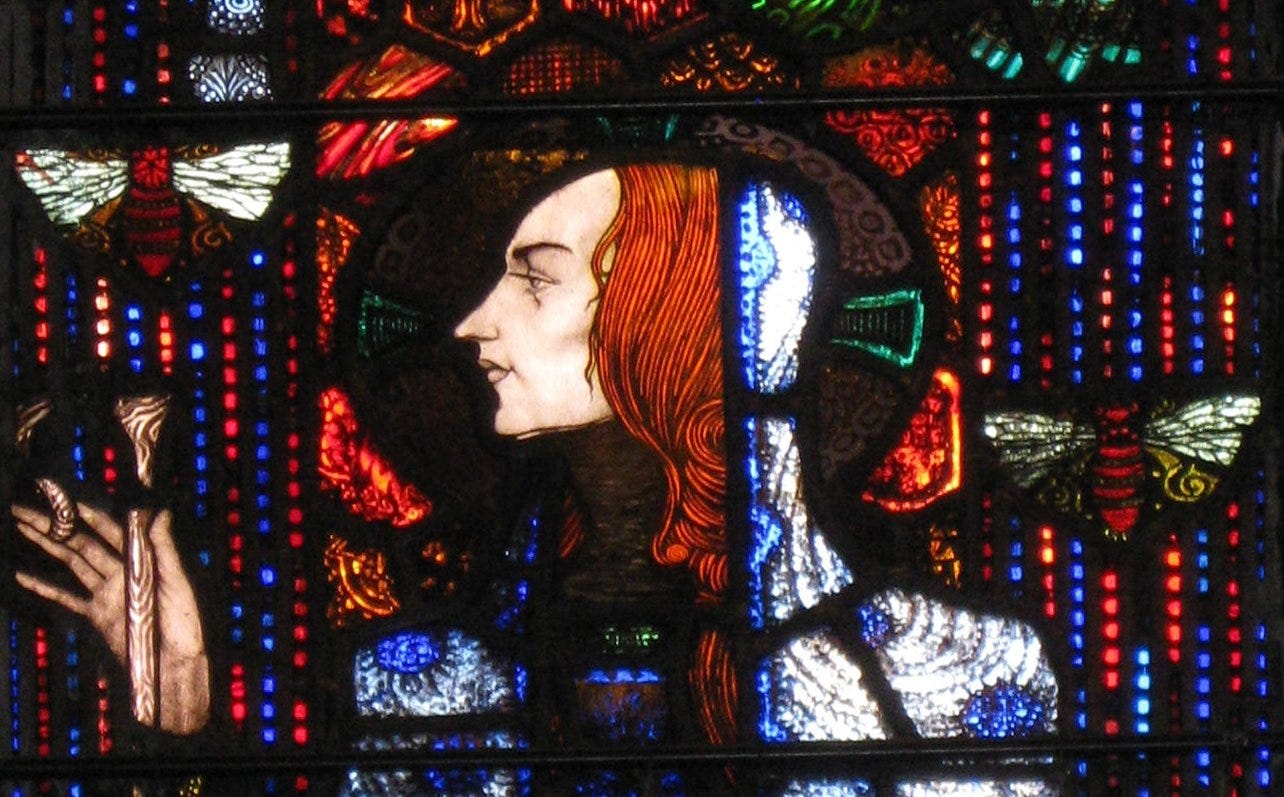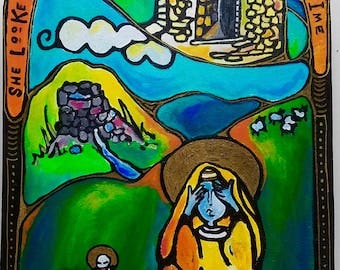For Women's History Month, here's five Irish women saints you've never heard of.
Ireland has more to offer than St. Patrick!
Yesterday, Irish enthusiasm was sky-high for St. Patrick’s Day. While I sat in my home office working away, I was dressed head-to-toe in distinctly Irish apparel. I chose to specifically sport a GAA jersey from my mother’s home county, Maigh Eo.
In cultural reception, St. Patrick’s Day has become less about honoring the Scottish saint who banished snakes from Éire, and more about celebrating Ireland. In the United States, celebrations can play a tad superficial, as there’s more to the land of saints and scholars than drink.
Because the month of March has become synonymous with Ireland, this time presents the opportunity to dig deep into the rich history of Ireland and her people. Because I’m interested in theology, I’ve taken time to expand my “saintly rolodex” beyond Patrick. And during Women’s History Month, it feels especially right to expand my knowledge of Ireland’s women saints, many of whom were instrumental in Ireland’s monastic development.
In my latest article for U.S. Catholic Magazine, I surveyed five Irish women saints of wild, wonderful, and mystical origins. You can read this article in full by clicking here, but I’ve included my saint list below.
St. Íte of Killeedy
She was an Irish nun who lived in the 6th century. Visited by an angel in a dream who gave her three precious stones. In another dream, it was revealed that these stones represented the gifts of the Trinity. Post-dream, Íte pursued the religious life. Founded a religious community in Co. Limerick. Intercessor for pregnancy and eye illnesses!
St. Gobnait
Born in County Clare, Gobnait (also known as Abigail in the Orthodox Christian Church) departed her family for Inisheer, the smallest of the Aran Islands. There, she founded a church, was visited by an angel in a dream and urged to journey forward, and ended that journey in Ballyvourney. She established monastic communities across Ireland. She also was fabled to be close with a hive of bees, who she would launch on enemies to protect her community.
St. Dearbhla
Fled from her native County Meath to Mayo, escaping a persistent suitor. He followed her to the Mullet Peninsula, where he explained her eyes transfixed him. In response, she plucked them out—horrifying her hopeful suitor. After he departed her, she washed her eyesockets in a nearby well, and her sight was restored. Freaky!

St. Muirgen, aka Lí Ban
Daughter of King of Ulster, whose village was swallowed by a flood. She and her dog found refuge in an underwater cave, where they sought refuge for one year. She prayed to a Celtic goddess to be turned into a salmon, but instead became a mermaid. (Stay with me.) So she lived as a mermaid for hundreds of years, until a boat of monks discovered her. She agreed to be baptized, relinquished her mermaid form, and died—legend says she immediately went to Heaven.
St. Cera
St. Cera (also known as Ciara, Keira, Kiara, and even Céire in the Irish monologies) was born in the middle of the 6th century and lived through the 7th century. She comes from the royal race of Conor, King of Ireland and is from County Tipperary. She was known for her miracles and also established monasteries throughout Ireland. St. Cera is fabled to have lived to over 100 years old. As someone who (technically) shares her namesake, I hope to attain her holiness and longevity.
May these five women saints compel us to grapple with the mysteries of our lives, and draw nearer to the Ultimate Mystery grounding all things.
Grá,
Céire










